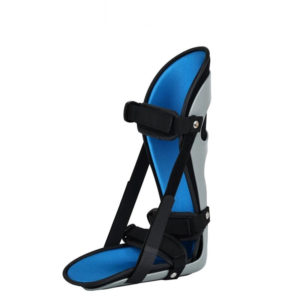Best Plantar Fasciitis Brace
Showing the single result
Showing the single result
Plantar Fasciitis Foot Brace
Plantar fasciitis is a condition that causes foot pain in the heel or arch area. Initially, you may experience dull, intermittent discomfort that gets worse after walking or running.
A Plantar Fasciitis brace holds your foot in an extended position while sleeping, gently stretching its plantar fascia, Achilles tendon and calf muscles.
Symptoms
Plantar Fasciitis is a common cause of heel pain due to inflammation in the plantar fascia, an extensive band of tissue running along the sole of your foot that connects to both your heel bone and metatarsals (toes).
Heel pain can range in intensity from sharp to dull, and it may be worse during your first steps in the morning or after taking a rest. Additionally, standing or running for extended periods of time may aggravate it further.
Inflammation of the plantar fascia is caused by repetitive stress and strain on its ligament. This can be from wearing shoes that are unsupportive, doing repetitive activities like running or jumping, as well as overuse of one’s feet.
Tight calf muscles are often indicative of plantar fasciitis, and stretching the calves can help relieve symptoms. Overweight individuals are especially vulnerable to developing this condition as their extra pressure puts extra strain on the foot and puts additional strain on its delicate plantar fascia ligament.
Diagnosis
Plantar fasciitis is the most common cause of heel pain. This condition develops due to repeated stress or overload on a strong band of tissue that runs across the bottom of your foot, connecting the heel bone to your toes, and supports your arch.
Inflammation at this attachment point may cause sharp, stabbing pain in the base of the heel or under the ball of your foot; it may also be accompanied by arch discomfort.
Heel pain often worsens with standing or walking for extended periods, and can be made worse by changing up your exercise regimen or suddenly engaging in an activity that puts undue strain on the ligaments.
The initial step to treating plantar fasciitis is taking a break from the activities that caused it. Nonsteroidal anti-inflammatory drugs (NSAIDs, like ibuprofen or aspirin) can reduce pain and inflammation. Resting your feet and applying ice to the affected area may help reduce swelling and discomfort as well.
Treatment using a Plantar Fasciitis foot brace
If your doctor suspects you have plantar fasciitis, they may prescribe ice and anti-inflammatory medications to reduce the inflammation in your foot. Physical therapy and stretching exercises may also be beneficial.
Orthotic devices such as Plantar Fasciitis braces that fit into shoes to support your arch can also be beneficial, as they distribute pressure more evenly and help alleviate plantar fasciitis symptoms.
Prevention
A plantar fasciitis foot brace is an effective way to alleviate pain caused by this condition. This condition occurs when small tears in the plantar fascia ligament (thick band of tissue extending from your heel to your toes) occur.
Your doctor can diagnose plantar fasciitis from your medical history and physical examination. They may also suggest taking an X-ray to rule out another issue such as a stress fracture that is causing your discomfort.
You can reduce your likelihood of developing plantar fasciitis by making some lifestyle adjustments. Wear supportive shoes with good arch support and replace athletic footwear regularly.
Instead of running or jogging, why not try a low-impact sport like swimming or bicycling? Additionally, do some simple home exercises to stretch your plantar fascia, Achilles tendon and calf muscles?

